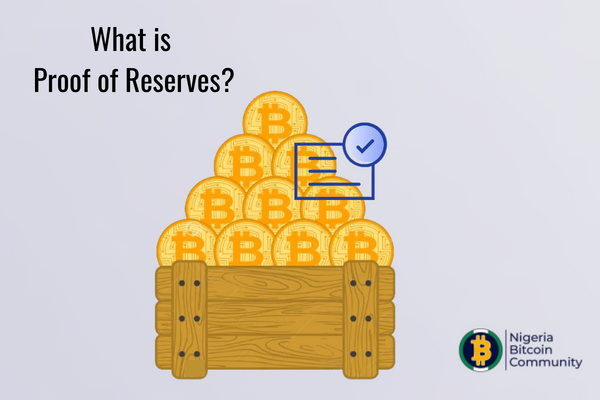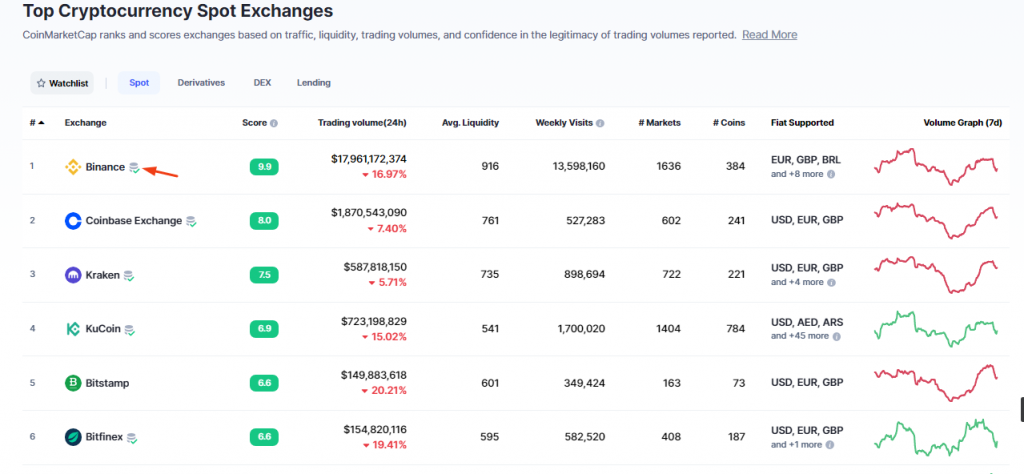“Proof of Reserves” is a concept that ensures that a given exchange or wallet has the funds it claims to have.
The term has been quite popular since the FTX debacle.
In this post, I discussed what “proof of reserves” is, why it is crucial, and how to know that an exchange safely holds your funds.
Key Takeaway
- Proof of Reserves is used by exchanges to publicise their asset holdings.
- It is made up of two kinds of reserves: “assets” and “liabilities.”
- An independent audit firm carries out proof-of-reserves using the Merkle tree, a cryptographic data structure.
- The essence of proof-of-reserves is to ensure that customers’ funds are always safe with an exchange.
What Is Proof Of Reserves?

Proof of Reserves (PoR) is an attestation that crypto custodians or exchanges have 1:1 backing for all the funds deposited by users.
Before we continue, here is an analogy.
Imagine that you deposited funds into a promising crypto exchange named FTX. Initially, everything seemed to be going fine.
But one day, you clicked on “Withdrawal,” and to your horror, the exchange has paused withdrawals and has in fact been liquidated.
This is a nightmare, right? Well, this has been the experience of most coin holders using an exchange wallet.
Thankfully, proof of reserves aims to put a check on such horrific experiences.
If you are not aware, following the events that led to the FTX collapse, CZ Binance tweeted in November 2022 urging exchanges to conduct proof of reserves.
Since then, proof of reserves has been the talk of crypto, and its importance has never been overemphasized.
How Does Proof Of Reserves Work?
There are three components of proof of reserves:
- Assets and Liabilities
- Auditing
- Merkle tree
Assets and Liabilities
A cryptocurrency custodian is expected to produce a record of its assets and liabilities to be audited separately in a PoR.
As you know, assets are the total amount of tokens held by an exchange’s wallet, while liabilities represent the user’s deposits.
When these two are separated in a PoR, it makes it transparent for users to accurately track the financial position of an exchange and spot any misappropriation of funds.
Auditing
There are two ways that a PoR audit can be conducted.
One is for an exchange to provide a signed message using the private key to the wallet address it claims to control.
But the one that has become increasingly popular is the use of an independent third-party auditing firm.
These third-party firms, notably Nansen and Chainlink are responsible for taking a snapshot of users’ account balances and producing a report attesting to an exchange’s current balance.
The advantage of the latter is that it eliminates the possibility of reserve data being falsified.
Merkle Tree
A Merkle tree is a cryptographic data structure that is employed in a PoR audit to ensure that users’ account balances are verified without exposing any private information.
Also, it enables exchange users to individually verify that their account balance is held in reserve.
The term is a bit complex and technical, but here is a snippet of how it works:
The Merkle tree hashes users’ account balance into leaf, branch, and root, where the root serves as a central source of data.
Auditors can ask for a random sample of leaf hashes. And when they do, the exchange in question provides them with it along with a partial path to the root hash.
So, with this information, auditors can verify the accuracy of the given data without compromising security. If you want to learn more about the Merkle tree, click here.
But is proof of reserves really worth it?
Why Is Proof Of Reserves Important And What Could Be The Disadvantages?
Let’s start with why proof of reserves is important.
1. Trust and Transparency
In light of the FTX debacle, there is a need for exchanges to maintain trust and transparency with their users.
By providing proof of reserve, exchanges can demonstrate that users’ funds are safe and can be withdrawn at any time.
In addition, users can verify that the balances they hold on a cryptocurrency exchange are backed 1:1.
2. Prevents Fraud and Misuse of Funds
PoR makes it much more difficult for exchanges to engage in the misappropriation of funds.
Since information is open to the public, users will be made aware of any subtle attempt to pilfer funds.
Also, it enables exchanges to accurately track their financial position and become mindful of their liabilities.
with these reasons in mind, it’s fair to say that PoR is advantageous to both users and exchanges.
Possible concerns
Despite the advantages of PoR, the following issues undermine its importance.
i. Stale Report
PoR doesn’t offer a real-time update on the status of an exchange reserve.
Rather, it only accounts for a snapshot of the balances that are taken either quarterly or weekly, and so forth.
This makes it a bit challenging for users to track the reserves at all times.
ii. Lack of an audit of liabilities
Most exchanges fail to include liabilities in their audit. As a result, users won’t be able to track the true financial status of such an exchange.
iii. It ignores off-chain Liabilities
PoR only accounts for on-chain data. this suggests that there might be off-chain liabilities about which users are unaware.
In other words, despite the promises of PoR, it does not yet guarantee the safety of funds in exchanges. On that note, the best way to safeguard your cryptos is to store them in hardware wallets such as:
However, if you have a small amount of crypto on an exchange that you want to trade, you can check to see if it is backed by PoR. Continue below!
How To Track An Exchange’s Proof of Reserve
Crypto market analytics companies like CoinMarketCap and Coingecko publish exchanges’ Proof of Reserves on their websites.
In the steps below, you will find how to check an exchange’s PoR using CoinMarketCap.
- Visit CoinMarketCap, and select “Exchanges.”

- You will see a “Reserves” icon displayed beside a listed exchange (the icon signifies that an exchange supports PoR). Click on the icon to view its details.

- Therein, you will find the details of an exchange’s PoR.

Note: You can verify if your funds are accounted for by an exchange’s PoR audit by visiting the exchange and clicking on “Audit” on your profile
Exchanges That Have Published Proof of Reserve
Most major exchanges have published their PoR. Below is a list of such exchanges.
The concern, however, is that some exchanges, such as Binance and Crypto.com have not included their liabilities in their audit.
Is Proof Of Reserve The Same As Insurance?
No! They are two different terms.
Insurance is a pool of money that is set aside as customer protection funds.
Typically, insurance is used to compensate users for any losses incurred in the event of a hack or misappropriation of funds.
Proof of reserve, on the other hand, is used by crypto exchanges to prove to users that they truly hold the assets that they have entrusted them with.
Conclusion
Alright, folks, this is where we call it a wrap.
The importance of PoR for crypto custodians has never been downplayed, ever since the downfall of one of the world’s most renowned exchanges.
Firstly, it prompts exchanges to keep proper accounts of users’ funds, ensuring that users’ funds are safe at all times.
In addition, it helps users keep tabs on an exchange’s financial status and spot signs of insolvency that may be imminent.
I hope you enjoyed this post. It’s time to get your feedback.
What are your thoughts about POR, and do you have any further questions?
Kindly leave your responses in the comments box below. Thank you!



0 Comments